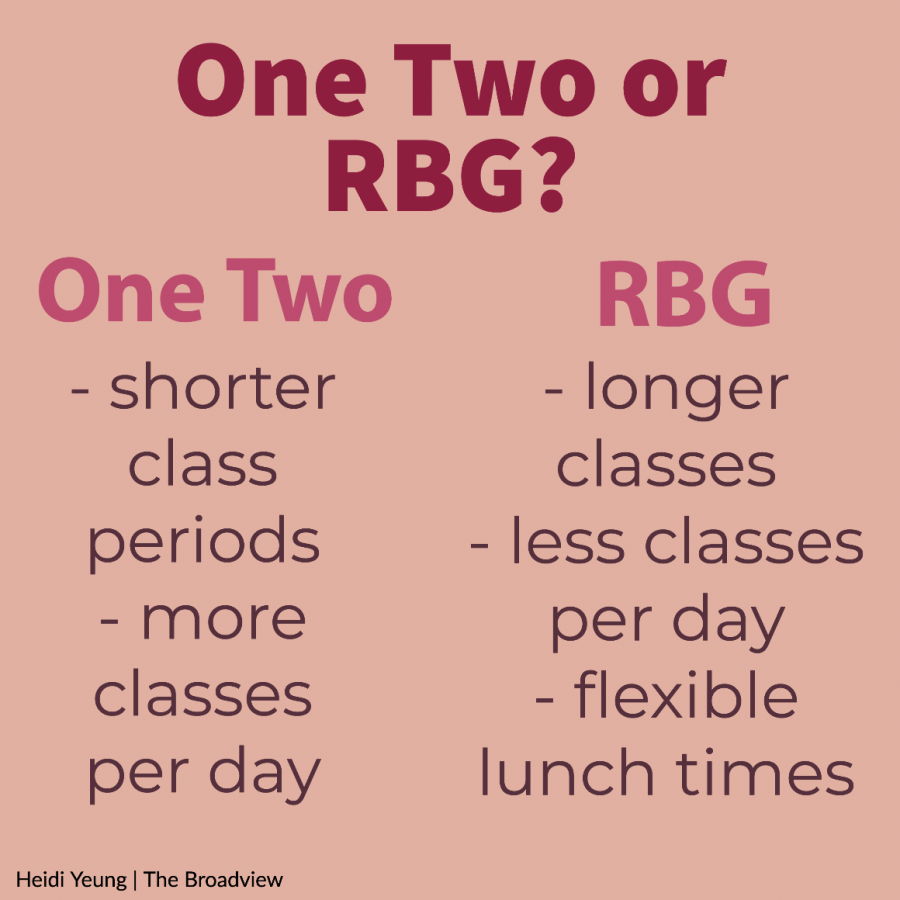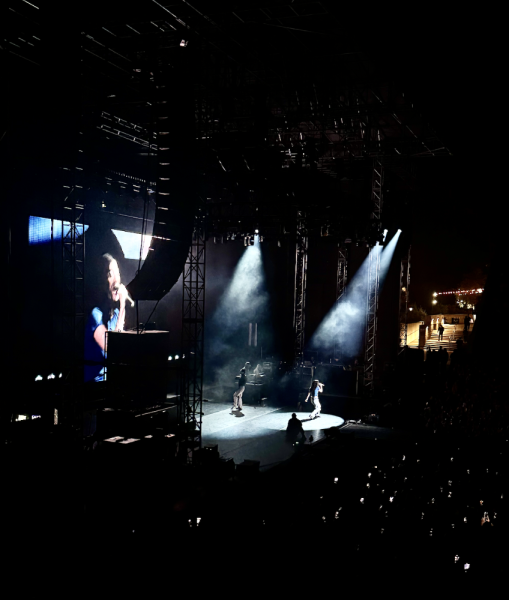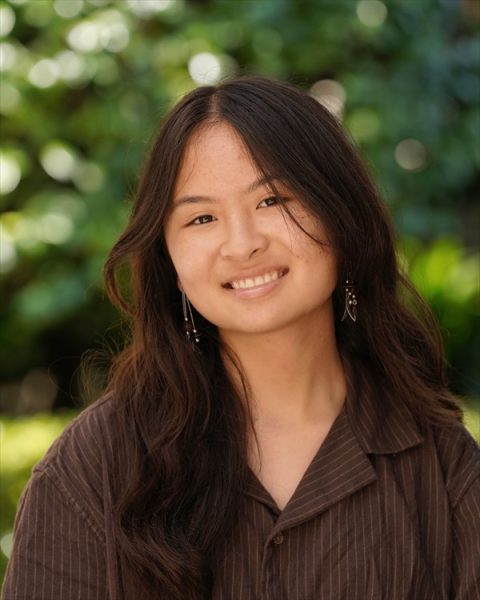Schedule stances
Discussing styles of school day schedule
The One Two and RBG schedules all have different qualities, in which students and teachers all have different preferences. The RBG schedule was created for the 2021-2022 school year’s schedule.
January 19, 2023
In honor of Martin Luther King Jr. day, students and faculty were given a three day weekend. This week’s four day long schedule has the One Two One Two schedule instead of the usual One Two Red Blue Green schedule.
This schedule change leaves students with varying opinions. The Red, Blue, Green day schedule, or RBG, is more adaptable, according to freshman Francesca Lauterbach.
“I prefer the One Two Red Blue Green schedule because it allows me to have a long free period during the last class period of the week,” Lauterbach said. “I also find that longer periods allow for more a lot more content to be taught,”
However, many students and teachers prefer the One Two One Two schedule. With the One Two One Two schedule, classes are shorter, which can help certain students stay attentive, according to freshman Ruby Quintos.
“The One Two One Two schedule works out better for me because with four classes in a day, I feel like I accomplish and learn more,” Quintos said. “The One Two One two schedule also encourages me to work through assignments quicker since our classes will meet in two days,”
For certain teachers, the One Two One Two schedule works out much better, as particular courses are more efficient during those days. When classes meet for shorter periods of time and there is not such a big gap between these classes, it is beneficial for concentration and learning, according to Mandarin teacher Yuhong Yao.
“For language classes specifically, the One Two One Two schedule works better,” Yao said. “However, during classes like science, the longer classes may be good for projects and labs in class,”
RBG days can also be more flexible for both students and teachers. According to Lauterbach, the mere five extra minutes of lunch on RBG days can be very useful.
“Having a flexible and slightly longer lunch time is helpful during RBG days as well, since teachers can give us the break according to their lesson plans,” Lauterbach said. “Also, RBG days have less passing periods, which reduces amounts of walking between campuses.”










